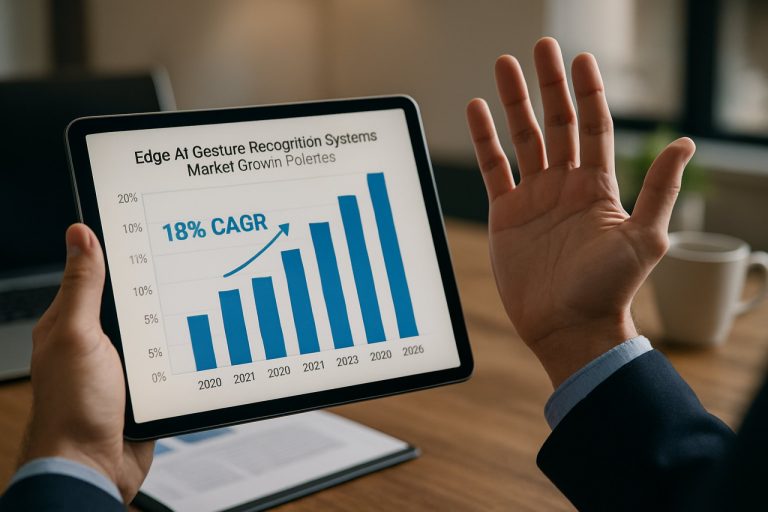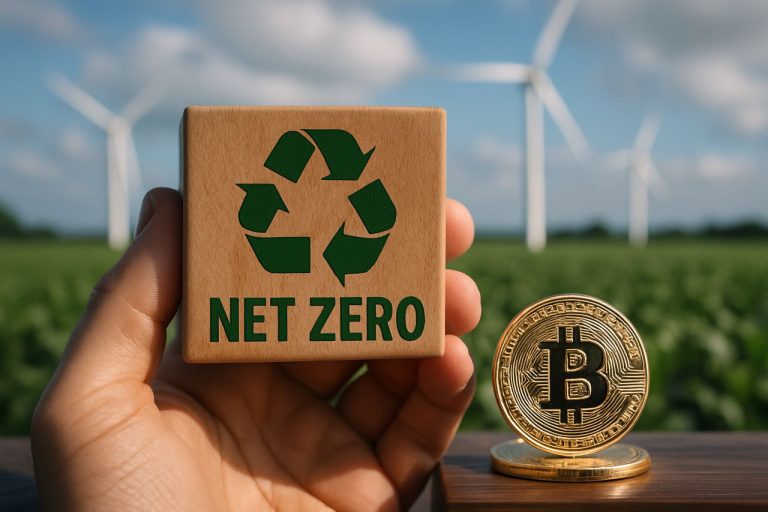
Tokenized Carbon Offsetting Platforms Market Report 2025: In-Depth Analysis of Blockchain-Enabled Climate Solutions and Growth Trajectories. Explore Key Trends, Regional Leaders, and Strategic Opportunities Shaping the Next 5 Years.
- Executive Summary & Market Overview
- Key Technology Trends in Tokenized Carbon Offsetting
- Competitive Landscape and Leading Platform Profiles
- Market Growth Forecasts (2025–2030): Adoption Rates and Revenue Projections
- Regional Analysis: North America, Europe, Asia-Pacific, and Emerging Markets
- Challenges, Risks, and Regulatory Considerations
- Opportunities and Strategic Recommendations for Stakeholders
- Future Outlook: Evolving Business Models and Market Drivers
- Sources & References
Executive Summary & Market Overview
Tokenized carbon offsetting platforms represent a rapidly evolving segment within the broader voluntary carbon market (VCM), leveraging blockchain technology to digitize, track, and trade carbon credits. These platforms enable the issuance of tokenized representations of carbon offsets, which can be transparently bought, sold, and retired on distributed ledgers. The core value proposition lies in enhancing transparency, traceability, and liquidity in carbon markets, addressing longstanding challenges such as double counting, lack of standardization, and limited market access for smaller project developers.
As of 2025, the global market for tokenized carbon offsetting platforms is experiencing robust growth, driven by increasing corporate net-zero commitments, regulatory scrutiny, and the maturation of blockchain infrastructure. According to McKinsey & Company, the voluntary carbon market could reach $50 billion by 2030, with tokenized solutions expected to capture a significant share due to their efficiency and scalability. Key players such as Toucan Protocol, KlimaDAO, and Flowcarbon have pioneered the integration of carbon credits with blockchain, collectively facilitating millions of dollars in carbon credit transactions and onboarding a new generation of climate-conscious investors.
The market landscape is characterized by a mix of public and private blockchain solutions, with Ethereum-based protocols dominating due to their established developer ecosystems and interoperability. Tokenized carbon credits are typically backed by verified projects registered with standards such as Verra and Gold Standard, ensuring environmental integrity. However, the sector faces challenges related to regulatory uncertainty, evolving standards for digital MRV (monitoring, reporting, and verification), and the need for greater interoperability between traditional registries and blockchain platforms.
Looking ahead to 2025, the market is poised for further expansion as institutional investors, corporates, and even governments explore tokenized carbon solutions for compliance and voluntary purposes. Strategic partnerships between blockchain platforms and established carbon registries are expected to accelerate mainstream adoption. The convergence of digital assets and environmental markets is likely to drive innovation in product offerings, such as fractionalized credits, real-time retirement, and integration with ESG reporting tools, positioning tokenized carbon offsetting platforms as a cornerstone of the next-generation climate finance ecosystem.
Key Technology Trends in Tokenized Carbon Offsetting
Tokenized carbon offsetting platforms are at the forefront of digital innovation in the voluntary carbon market, leveraging blockchain technology to enhance transparency, traceability, and efficiency in carbon credit transactions. In 2025, several key technology trends are shaping the evolution and adoption of these platforms.
- Blockchain-Enabled Transparency and Traceability: Platforms are increasingly utilizing public blockchains to record the issuance, transfer, and retirement of carbon credits. This immutable ledger ensures that each credit is unique, verifiable, and cannot be double-counted, addressing longstanding concerns about fraud and opacity in traditional carbon markets. Leading platforms such as Toucan and KlimaDAO have set industry standards by tokenizing verified carbon credits and making transaction histories publicly accessible.
- Integration with Global Carbon Registries: In 2025, tokenized platforms are deepening integration with established carbon registries, such as Verra and Gold Standard. This ensures that tokenized credits are backed by real, certified projects, and that on-chain data is synchronized with off-chain records. Such integrations are critical for institutional adoption and regulatory compliance.
- Automated Smart Contracts: The use of smart contracts is automating key processes, including credit issuance, transfer, and retirement. This reduces administrative overhead, minimizes human error, and enables programmable features such as automatic retirement upon purchase or dynamic pricing based on market demand. Platforms like C3 are pioneering these capabilities, making carbon offsetting more accessible and efficient.
- Interoperability and Cross-Chain Solutions: As the ecosystem matures, interoperability between different blockchains and platforms is becoming a priority. Solutions that enable the transfer of tokenized credits across networks (e.g., Ethereum, Polygon, and emerging green blockchains) are facilitating broader market participation and liquidity. This trend is exemplified by projects collaborating with infrastructure providers like Polygon to scale carbon markets sustainably.
- Enhanced User Experience and Accessibility: User interfaces are being refined to cater to both institutional and retail participants, with simplified onboarding, real-time analytics, and integration with ESG reporting tools. This democratization of access is expanding the reach of tokenized carbon offsetting beyond crypto-native users to mainstream businesses and individuals.
Collectively, these technology trends are positioning tokenized carbon offsetting platforms as pivotal infrastructure for the next generation of climate action, driving greater trust, efficiency, and scalability in global carbon markets.
Competitive Landscape and Leading Platform Profiles
The competitive landscape for tokenized carbon offsetting platforms in 2025 is characterized by rapid innovation, increased institutional participation, and a growing emphasis on transparency and verifiability. As the voluntary carbon market expands and blockchain adoption accelerates, several platforms have emerged as leaders, each leveraging distributed ledger technology to address longstanding challenges in carbon offsetting such as double counting, lack of traceability, and limited market access.
Key players in this space include Toucan Protocol, KlimaDAO, Flowcarbon, and Carbonmark. These platforms tokenize verified carbon credits, enabling fractional ownership, real-time tracking, and seamless trading on decentralized marketplaces. For instance, Toucan Protocol has established itself as a foundational infrastructure provider, bridging traditional carbon credits onto the blockchain and supporting interoperability with other DeFi applications. KlimaDAO, built atop Toucan’s infrastructure, has pioneered the use of tokenized carbon as a reserve asset, incentivizing carbon offsetting through its native KLIMA token and fostering a robust on-chain carbon economy.
Flowcarbon, backed by prominent investors, focuses on integrating carbon credits into mainstream financial products, targeting institutional buyers and offering tokenized credits that comply with leading standards such as Verra and Gold Standard. Carbonmark, meanwhile, positions itself as a decentralized marketplace, aggregating tokenized credits from multiple sources and providing transparent pricing and provenance data to buyers and sellers.
The competitive dynamics are further shaped by partnerships with traditional registries and the emergence of new standards for digital MRV (Measurement, Reporting, and Verification). Platforms are increasingly collaborating with established carbon registries like Verra and Gold Standard to ensure the legitimacy of tokenized credits and to facilitate the migration of legacy credits onto blockchain rails. This trend is expected to intensify as regulatory scrutiny increases and corporate demand for high-integrity offsets grows.
- Toucan Protocol: Infrastructure for tokenizing and bridging carbon credits.
- KlimaDAO: On-chain carbon market and reserve asset protocol.
- Flowcarbon: Institutional-grade tokenized carbon credits.
- Carbonmark: Decentralized carbon credit marketplace.
As the sector matures, differentiation will hinge on the ability to scale liquidity, ensure credit quality, and integrate with both Web3 and traditional finance ecosystems. The leading platforms are well-positioned to capitalize on these trends, but ongoing competition and regulatory developments will continue to shape the market landscape through 2025.
Market Growth Forecasts (2025–2030): Adoption Rates and Revenue Projections
The market for tokenized carbon offsetting platforms is poised for significant expansion in 2025, driven by increasing corporate commitments to net-zero targets and the maturation of blockchain-based environmental solutions. According to projections by Boston Consulting Group, the voluntary carbon market could reach a value of $10–$40 billion by 2030, with tokenized platforms expected to capture a growing share due to their transparency, traceability, and efficiency advantages.
In 2025, adoption rates for tokenized carbon offsetting platforms are forecasted to accelerate, particularly among multinational corporations and financial institutions seeking verifiable and auditable carbon credits. McKinsey & Company estimates that digital solutions, including blockchain-based platforms, could account for up to 20% of all voluntary carbon credit transactions by the end of 2025. This translates to a potential market volume of $1.5–$3 billion in tokenized carbon credits traded annually, assuming a conservative scenario where the overall voluntary market reaches $15 billion by 2025.
Revenue projections for platform providers are equally robust. Grand View Research anticipates that the global blockchain technology market in environmental applications, including carbon offsetting, will grow at a CAGR of over 50% from 2024 to 2030. For tokenized carbon offsetting platforms specifically, annual revenues are expected to surpass $500 million in 2025, driven by transaction fees, subscription models, and value-added services such as project verification and reporting.
Adoption is expected to be strongest in regions with advanced climate policies and digital infrastructure, such as Europe and North America. However, emerging markets in Asia-Pacific and Latin America are also projected to see rapid uptake, particularly as local governments and enterprises seek to participate in global carbon markets. The entry of major players like IBM and Salesforce into the space is likely to further accelerate adoption and revenue growth by providing scalable, enterprise-grade solutions.
Overall, 2025 is set to be a pivotal year for tokenized carbon offsetting platforms, with adoption rates and revenues expected to climb sharply as the market matures and regulatory clarity improves.
Regional Analysis: North America, Europe, Asia-Pacific, and Emerging Markets
The regional landscape for tokenized carbon offsetting platforms in 2025 is marked by varying levels of adoption, regulatory maturity, and market drivers across North America, Europe, Asia-Pacific, and emerging markets.
North America remains a frontrunner, propelled by robust venture capital investment, a mature blockchain ecosystem, and progressive climate policies. The United States, in particular, has seen a surge in startups and established players leveraging tokenization to enhance transparency and traceability in carbon markets. Notable platforms such as KlimaDAO and Toucan Protocol have expanded their offerings, integrating with voluntary carbon markets and collaborating with corporate sustainability programs. Canada is also witnessing increased activity, supported by government-backed pilot projects and a growing emphasis on ESG reporting.
Europe is characterized by stringent regulatory frameworks and a strong policy push towards net-zero targets. The European Union’s evolving carbon market regulations and the integration of digital assets into financial oversight have fostered a cautious but innovative environment. Platforms like C3 and Flowcarbon are piloting tokenized solutions in alignment with the EU Emissions Trading System (ETS), while also addressing interoperability with legacy registries. The region’s focus on standardization and quality assurance is driving partnerships between technology providers and established carbon registries.
Asia-Pacific is emerging as a dynamic growth region, with countries like Singapore, South Korea, and Australia leading the charge. Singapore’s proactive regulatory sandbox approach and its ambition to become a global carbon trading hub have attracted both local and international tokenized offset platforms. Australia’s voluntary carbon market is seeing increased tokenization activity, supported by government initiatives and corporate demand for high-integrity offsets. However, the region faces challenges related to market fragmentation and varying regulatory readiness across countries.
Emerging markets in Latin America, Africa, and Southeast Asia are increasingly participating in tokenized carbon offsetting, often as suppliers of high-quality nature-based credits. Projects in Brazil, Kenya, and Indonesia are leveraging blockchain to improve credit traceability and access to global buyers. However, these markets face hurdles such as limited digital infrastructure, regulatory uncertainty, and the need for capacity building. International organizations and climate finance initiatives are playing a pivotal role in supporting pilot projects and fostering cross-border collaboration.
Overall, while North America and Europe lead in technological and regulatory sophistication, Asia-Pacific and emerging markets are rapidly catching up, driven by both supply and demand-side incentives. The global landscape in 2025 is expected to be increasingly interconnected, with interoperability and standardization as key themes shaping the evolution of tokenized carbon offsetting platforms.
Challenges, Risks, and Regulatory Considerations
Tokenized carbon offsetting platforms, which leverage blockchain technology to issue, track, and trade carbon credits as digital tokens, face a complex landscape of challenges, risks, and regulatory considerations as the market matures in 2025. While these platforms promise enhanced transparency, traceability, and liquidity for carbon markets, several critical issues must be addressed to ensure their credibility and long-term viability.
One of the foremost challenges is the risk of double counting and fraudulent credits. Without robust verification mechanisms, there is a danger that the same carbon offset could be tokenized and sold multiple times, undermining the environmental integrity of the system. Leading organizations such as Verra and Gold Standard have raised concerns about the need for rigorous, interoperable registries and third-party audits to prevent such occurrences.
Regulatory uncertainty is another significant risk. Jurisdictions worldwide are still developing frameworks for both digital assets and carbon markets, leading to a patchwork of rules that can create compliance challenges for platform operators and participants. For example, the U.S. Securities and Exchange Commission and the European Securities and Markets Authority have yet to issue definitive guidance on whether tokenized carbon credits constitute securities or fall under other regulatory categories. This ambiguity can deter institutional participation and slow market growth.
Market fragmentation is also a concern. The proliferation of multiple, non-interoperable tokenized platforms can lead to liquidity silos and inconsistent standards, making it difficult for buyers to assess the quality and authenticity of credits. Industry groups such as the Institute of International Finance have called for greater standardization and collaboration to address these issues.
Finally, technological risks such as smart contract vulnerabilities, cyberattacks, and blockchain scalability limitations pose ongoing threats. High-profile exploits in the broader decentralized finance (DeFi) sector have highlighted the need for rigorous security audits and resilient infrastructure (Chainalysis).
In summary, while tokenized carbon offsetting platforms offer transformative potential, their success in 2025 will depend on resolving these challenges through enhanced verification, regulatory clarity, industry collaboration, and robust technological safeguards.
Opportunities and Strategic Recommendations for Stakeholders
The tokenized carbon offsetting platform market in 2025 presents a dynamic landscape of opportunities for stakeholders, driven by increasing regulatory pressure, corporate sustainability commitments, and technological advancements in blockchain. As global carbon markets expand and digital asset adoption accelerates, several strategic pathways emerge for investors, project developers, technology providers, and corporates.
- Expansion into Voluntary Carbon Markets: The voluntary carbon market is projected to reach $50 billion by 2030, with tokenization offering enhanced transparency and traceability (McKinsey & Company). Stakeholders can capitalize by developing or integrating platforms that facilitate seamless trading and verification of tokenized credits.
- Interoperability and Standardization: There is a growing demand for interoperable solutions that connect disparate carbon registries and blockchain networks. Strategic partnerships with standards bodies and registry operators can position platforms as trusted infrastructure providers (Institute of International Finance).
- Corporate ESG Integration: As ESG reporting becomes mandatory in more jurisdictions, corporates seek robust, auditable offsetting solutions. Platforms that offer automated reporting, real-time tracking, and integration with enterprise systems will attract enterprise clients (Deloitte).
- Retail and Micro-Offsetting: Tokenization enables fractional ownership and micro-transactions, opening the market to retail investors and consumers. Stakeholders can develop user-friendly apps and APIs to embed offsetting in consumer products and services (Gold Standard).
- Innovative Financing Models: Tokenized platforms can facilitate new financing mechanisms for carbon projects, such as forward credit sales and liquidity pools. Engaging with project developers and impact investors can unlock early-stage project funding (World Bank).
Strategically, stakeholders should prioritize compliance with evolving regulations, invest in robust verification technologies, and foster ecosystem partnerships. By focusing on transparency, scalability, and user experience, tokenized carbon offsetting platforms can capture significant value in the rapidly maturing carbon market landscape of 2025.
Future Outlook: Evolving Business Models and Market Drivers
The future outlook for tokenized carbon offsetting platforms in 2025 is shaped by a convergence of technological innovation, regulatory evolution, and shifting corporate sustainability priorities. As blockchain technology matures, these platforms are expected to move beyond pilot phases and niche adoption, entering mainstream environmental, social, and governance (ESG) strategies for both corporations and institutional investors. The tokenization of carbon credits—where each token represents a verified unit of carbon offset—enables transparent, traceable, and efficient trading, addressing longstanding issues of double counting and lack of trust in traditional carbon markets.
Key market drivers include increasing regulatory pressure for climate disclosures, such as the European Union’s Corporate Sustainability Reporting Directive (CSRD) and the U.S. Securities and Exchange Commission’s proposed climate risk disclosure rules. These regulations are pushing companies to seek verifiable, auditable carbon offset solutions, which tokenized platforms are uniquely positioned to provide. Additionally, the voluntary carbon market is projected to grow significantly, with estimates suggesting it could reach $50 billion by 2030, up from $2 billion in 2021, as reported by McKinsey & Company.
Business models are evolving rapidly. Leading platforms are moving towards integrated marketplaces that offer not only tokenized credits but also project origination, due diligence, and real-time impact reporting. For example, Toucan and KlimaDAO are pioneering decentralized autonomous organizations (DAOs) that aggregate and tokenize carbon credits, while also incentivizing liquidity and price discovery through decentralized finance (DeFi) mechanisms. Meanwhile, traditional registries such as Verra and Gold Standard are exploring partnerships and integrations with blockchain platforms to maintain relevance and ensure the integrity of tokenized credits.
- Interoperability and standardization are expected to be major themes, with industry consortia and alliances working to harmonize data formats and verification protocols.
- Institutional adoption is likely to accelerate as platforms demonstrate compliance with anti-money laundering (AML) and know-your-customer (KYC) requirements, addressing concerns from regulators and large buyers.
- Emerging business models may include subscription-based offsetting services, embedded carbon offsetting in consumer transactions, and integration with supply chain management systems.
In summary, 2025 is poised to be a pivotal year for tokenized carbon offsetting platforms, with market growth driven by regulatory tailwinds, technological advancements, and the increasing demand for credible, scalable climate action solutions.
Sources & References
- McKinsey & Company
- KlimaDAO
- Flowcarbon
- Verra
- Gold Standard
- Polygon
- Carbonmark
- Grand View Research
- IBM
- Salesforce
- C3
- European Securities and Markets Authority
- Institute of International Finance
- Chainalysis
- Deloitte
- World Bank



